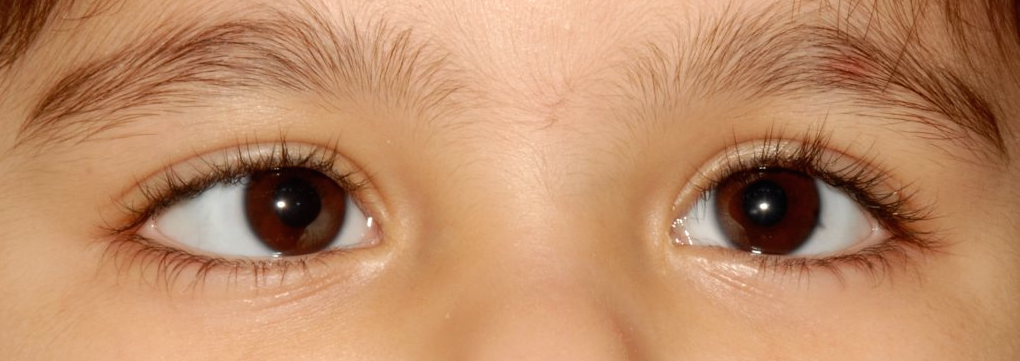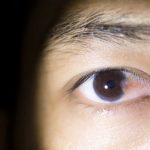STRABISMUS SURGERY
What is strabismus (misaligned eyes)?
Strabismus (misaligned eyes) is a condition in which your eyes don’t line up with one another. In other words, one eye is turned in a direction that’s different from the other eye. Under normal conditions, the six muscles that control eye movement work together and point both eyes in the same direction. If you have strabismus, these muscles have issues controlling eye movement and can’t keep normal ocular alignment (eye position).
While strabismus is mainly found in childhood, adults can also experience strabismus. Most commonly, strokes cause ocular misalignment in adults. Another cause is physical trauma. But you can be an adult with childhood strabismus that wasn’t treated or was treated and has come back (recurred) or gotten worse.
Who needs strabismus surgery?
About 5% of the population has strabismus. If your eyes are misaligned, and other treatments haven’t worked, an eye care provider may suggest strabismus surgery. Most often, children have strabismus surgery, but adults can have it, too.
You may need eye muscle surgery if you have:
- Exotropia: One or both of your eyes turn outward toward your ears.
- Esotropia: One or both of your eyes turn inward toward your nose.
- Hypertropia: One eye turns upward as compared to your other eye.
- Hypotropia: One eye turns downward as compared to your other eye.
- Stroke: Sometimes, you may develop eye problems after a stroke.
- Nystagmus: This is the term for an eye that wiggles or moves erratically.
What are the types of strabismus?
There are several forms of strabismus. The most common are:
1- Accommodative esotropia: This often occurs in cases of uncorrected farsightedness and a family history of eyes that turn in. Because the ability to focus is linked to where your eyes point, the extra focusing effort needed to keep distant objects in clear focus may cause your eyes to turn inward.
2- Intermittent exotropia: In this type of strabismus, one eye will fixate (concentrate) on a target while the other eye points outward. Often, your eye will alternate between looking straight and turning outward.
3- Infantile esotropia: In this type of strabismus, infants show a significant inward turning of both eyes before they’re 6 months old. There’s usually no significant amount of farsightedness present, and glasses don’t correct the crossing. Inward turning may first happen on an irregular basis, but soon becomes constant. It’s present when your child looks far away and up close. The treatment for this type of strabismus is surgery on the muscles of one or both eyes to correct the alignment.
What is Strabismus Surgery?
Strabismus surgery, also referred to as squint surgery, crossed eyes surgery, and eye muscle repair surgery is the surgical treatment of eyes’ misalignment. This procedure is used where non-surgical approaches such as vision therapy, wearing glasses, and prism lenses do not help the situation. In this surgery, one or more eye muscles are manipulated to correct the eye alignment.
Strabismus Surgery Procedure in Iran
Strabismus surgery in Iran takes less than 1 to 2 hours. Most of the time, the patient is not required to stay overnight at the hospital. Depending on whether the candidate is a child or an adult, the surgeon might use either general or local anesthesia. The surgeon keeps the patient’s eyelids open with a speculum. An opening is then made through the conjunctiva to access the muscle. The involved muscle is weakened, strengthened or moved to the intended position. A knot is fastened in place. There are three types strabismus surgery types in terms of the numbers of muscles that are involved:
One-muscle strabismus surgery (unilateral rectus muscle surgery)
Two-muscles strabismus surgery (bilateral rectus muscle surgery)
Three-muscles strabismus surgery.
What to Expect Before Strabismus Surgery?
Apart from general health check-ups and medical history considerations, the doctor may carry out a set of tests and exams before the surgery. Diagnosis tests include measuring vision clarity involving reading letters, eye alignment testing to measure up whether both eyes focus properly or coordinate with each other. The doctor may also conduct a refraction test on candidates to determine the lens power. Various assessment tests may be advised to determine the structure of internal parts of the eyes. All these tests intend to find any sign of developed strabismus. If that was the case, surgical treatment can be discussed as a final option.
Cost in Iran
The cost of strabismus surgery in Iran is more affordable and it is considerably lower than clinics in the UK, the US or neighboring countries in the region. A strabismus surgery cost in Iran is approximately $1,400 to $2,200. However, the cost of this procedure in the United States ranges from $7,000 up to $9,000 or more.
What happens before strabismus surgery?
Before surgery, your provider will want to know:
- Your medical history, including past and current medical conditions and procedures.
- If you have a history of prior eye muscle surgery, they’ll want to review your past operative reports.
- What medicines and supplements you take, especially any blood thinners.
- If you or any other person in your family has had any issues with anesthesia.
- If you have any allergies to medications.
At your pre-anesthesia visit, the provider will tell you when to stop eating and drinking before surgery. Usually, you’re not supposed to take anything by mouth after midnight. They’ll also tell you if you need to stop taking any of your medications before the surgery.
You’ll have another eye exam to clarify which muscles need to be changed.
What happens during strabismus surgery?
You’ll get medicine through a vein, or intravenously (IV). All children and most adults will get general anesthesia. Some adults may get eye numbing and light sedation. Other things you can expect include:
- Your surgical team will monitor your vital signs during the procedure.
- Your surgical team will use an eye speculum to hold your eye open.
- Your surgeon will cut into the outer white covering of your eye (conjunctiva).
- Your surgeon will pull up the muscles that need surgery with a hook. They’ll then move the muscle as needed.
- Your surgeon will attach the muscles and close your eye with stitches (sutures) that dissolve.
- A member of the team will take away the speculum and put eye drops or ointment into your eye.
- The surgery takes anywhere from about 30 minutes to two hours.
What happens after strabismus surgery?
You’ll go to a recovery room after surgery. Your team will keep monitoring your vital signs until you go home.
A responsible adult will need to drive you home and stay with you for 24 hours. You may need to rest and take it easy for up to a week.
Your provider will prescribe eye drops or ointment for you to take at home.
Your provider may recommend acetaminophen, or sometimes oral nonsteroidal anti-inflammatory drugs (NSAIDs) like ibuprofen, for pain.
Ask your provider for information about what you should look out for after surgery and when you would need to call them.
What is strabismus surgery?
Strabismus surgery is eye muscle surgery to treat crossed eyes (strabismus). This procedure makes your eye muscles either tighter or looser and aligns the position of your eyes so they’re centered and can work together.
Who needs strabismus surgery?
About 5% of the population has strabismus. If your eyes are misaligned, and other treatments haven’t worked, an eye care provider may suggest strabismus surgery. Most often, children have strabismus surgery, but adults can have it, too.
You may need eye muscle surgery if you have:
- Exotropia: One or both of your eyes turn outward toward your ears.
- Esotropia: One or both of your eyes turn inward toward your nose.
- Hypertropia: One eye turns upward as compared to your other eye.
- Hypotropia: One eye turns downward as compared to your other eye.
- Stroke: Sometimes, you may develop eye problems after a stroke.
- Nystagmus: This is the term for an eye that wiggles or moves erratically.
Are there types of strabismus eye surgery?
You can have strabismus surgery on one or both eyes. Bilateral strabismus surgery is the term for when you have the surgery on both eyes.
- Resection is the term for making the muscle shorter by cutting it.
- Plication is the term for making the muscle shorter by folding it over.
- Recession is the term for moving the muscle back to make it less tight.
- You may have adjustable surgery, where a provider can adjust the muscle sutures to correct for remaining misalignment in the recovery area or clinic soon after strabismus surgery in the operating room.
Procedure Details
What happens before strabismus surgery?
Before surgery, your provider will want to know:
- Your medical history, including past and current medical conditions and procedures.
- If you have a history of prior eye muscle surgery, they’ll want to review your past operative reports.
- What medicines and supplements you take, especially any blood thinners.
- If you or any other person in your family has had any issues with anesthesia.
- If you have any allergies to medications.
At your pre-anesthesia visit, the provider will tell you when to stop eating and drinking before surgery. Usually, you’re not supposed to take anything by mouth after midnight. They’ll also tell you if you need to stop taking any of your medications before the surgery.
You’ll have another eye exam to clarify which muscles need to be changed.
What happens during strabismus surgery?
You’ll get medicine through a vein, or intravenously (IV). All children and most adults will get general anesthesia. Some adults may get eye numbing and light sedation. Other things you can expect include:
- Your surgical team will monitor your vital signs during the procedure.
- Your surgical team will use an eye speculum to hold your eye open.
- Your surgeon will cut into the outer white covering of your eye (conjunctiva).
- Your surgeon will pull up the muscles that need surgery with a hook. They’ll then move the muscle as needed.
- Your surgeon will attach the muscles and close your eye with stitches (sutures) that dissolve.
- A member of the team will take away the speculum and put eye drops or ointment into your eye.
- The surgery takes anywhere from about 30 minutes to two hours.
What happens after strabismus surgery?
You’ll go to a recovery room after surgery. Your team will keep monitoring your vital signs until you go home.
A responsible adult will need to drive you home and stay with you for 24 hours. You may need to rest and take it easy for up to a week.
Your provider will prescribe eye drops or ointment for you to take at home.
Your provider may recommend acetaminophen, or sometimes oral nonsteroidal anti-inflammatory drugs (NSAIDs) like ibuprofen, for pain.
Ask your provider for information about what you should look out for after surgery and when you would need to call them.
Risks / Benefits
What are the advantages of strabismus surgery?
Strabismus surgery can improve the way your eyes work together with stereo (3D) vision. This is especially true for children.
Having strabismus surgery corrects alignment but may not improve vision. However, many people who’ve had the surgery think the surgery is worth it because they have improved self-confidence and a better appearance.
What are the risks or complications of strabismus surgery?
Strabismus surgery is very safe, but all operations have risks. Risks or complications of strabismus surgery include:
- Recurrent misalignment. Eyes may go back to crossing or wandering in the same direction as they did before your surgery or may over-correct and cross or wander in the opposite direction.
- Getting an infection.
- Bleeding.
- Being allergic to medications or anesthesia.
- Developing double vision (diplopia).
- Scarring.
- Ptosis (eyelid drooping).
- Piercing the sclera (the white of the eye).
What is the recovery time after strabismus surgery?
You’ll need anywhere from a few days to weeks of rest after your surgery. Your eyes could be red for weeks and may feel sore or scratchy. They won’t fully heal for about three to 12 weeks. Don’t drive until your provider tells you that it’s OK to do so.Don’t go into swimming pools, saunas or hot tubs for two weeks after the procedure. This will reduce your chances of infection.
























